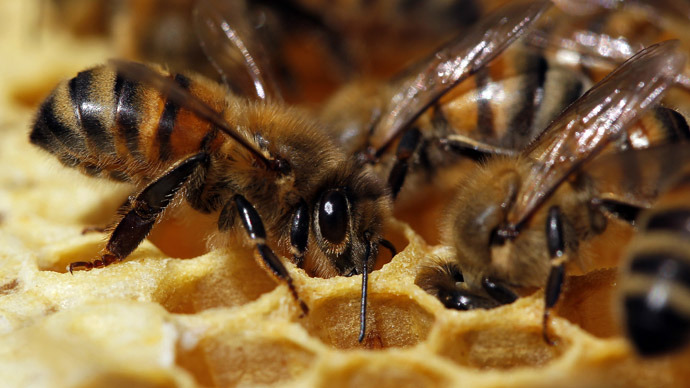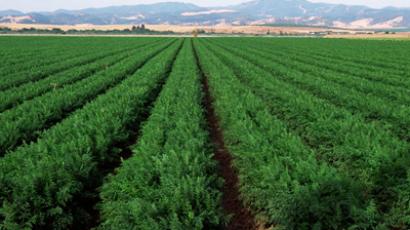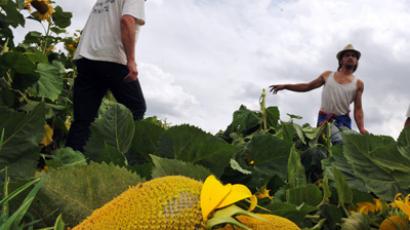'Beemageddon' threatens US with food disaster

US honey bees have been dying by the tens of millions, with annual death rates of about 30 percent. With fewer bees to pollinate fruits and vegetables each year, 'beemageddon' may soon cause the collapse of the agriculture industry.
Honey bees pollinate more than 100 US crops, including apples, zucchinis, avocados and plums, that are worth more than $200 billion a year. Since 2006, about 10 million bee hives at an average value of $200 each have been lost in what scientists call the Colony Collapse Disorder (CCD), according to a new report by the US Department of Agriculture.
There are currently about 2.5 million honey bee colonies in the US, which is a drastic decrease from the 6 million that existed in 1947 and the 3 million that existed in 1990. Last winter alone, the honey bee population declined by 31.1 percent, with some beekeepers reporting losses of 90 to 100 percent. In the previous two winters, beekeepers lost about 22 percent of their populations.
“Currently, the survivorship of honey bee colonies is too low for us to be confident in our ability to meet the pollination demands of US agricultural crops,” the USDA report states.
California’s almond crop, which blooms toward the end of winter, would suffer the most. About 80 percent of the global almond supply comes from the Golden State’s orchards, and 70 percent of the state’s crop is marketed overseas.
US beekeepers truck about 1.5 million out-of-state colonies to the almond orchards each year, which depend on the insect’s pollination. The colonies are tasked with pollinating about 760,000 acres of almond trees at the end of each winter. It takes 60 percent of all US bee colonies to pollinate the $4 billion crop.
Zac Browning, a beekeeper, told NPR that the almond orchards have become “ground zero in commercial beekeeping” and that many beekeepers drive over from their home base in the Midwest.
But with a bee shortage that gets worse every year, many of the almond orchards will never be pollinated, which could eventually cause a global almond shortage and economic consequences for the US.
The USDA knows how the agriculture industry will be affected by the large-scale bee die-offs, but does not know why exactly they are dying in such numbers. The report cites “multiple factors… including parasites and disease, genetics, poor nutrition and pesticide exposure”, while also citing last summer’s drought as a contributing factor.
“Undernourished or malnourished bees appear to be more susceptible to pathogens, parasites, and other stressors, including toxins,” the USDA report states.
During CCDs, surviving adult bees abandon their hives, leaving behind the queen bee, brood and food stores.
“Bees across the country are not in as good a shape as last year,” Eric Mussen, a University of California bee specialist, told the Christian Science Monitor. “When you stress them far enough, the bees just give in.”
After large-scale honey bee die-offs each winter, beekeepers try to restore their populations in the summer. But with the populations dropping so low, the economic ramifications are almost unavoidable.
The European Commission suspects that neonicotinoids, a class of insecticides chemically related to nicotine, might be responsible – at least partially – for the die-offs and the CCDs. Honey bees have also died off in unusually large numbers in Europe, prompting the commission to impose a two-year ban on neonicotinoids last month to give scientists time to review the chemicals’ impact on bee health.
But US officials have stated that they don’t have enough evidence to ban neonicotinoids. And with a drastically decreasing honey bee population, ‘beemageddon’ might be just around the corner.
“We are one poor weather event or high winter bee loss away from a pollination disaster,” Jeff Pettis, the USDA’s bee research leader, said in the report.














